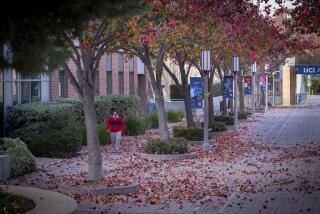Measuring UC’s Radioactivity Roles
- Share via
* While I appreciated the opportunity to explain the need for a low-level radioactive waste disposal facility in your article (“Trying to Solve Problem of Dangerous Wastes,” Feb. 22), it is important to clarify that the University of California has not “launched an ad campaign urging approval” of such a facility. Moreover, UC has not paid for any advertisements, although it maintains an institutional membership in the California Radioactive Materials Management Forum, which was one of the ad sponsors.
The university uses radioactive materials in many scientific research, teaching, and patient care activities. For example, they are used in the research, diagnosis, and treatment of many human health disorders, including communicable diseases (such as AIDS and herpes), neurological ailments (such as Alzheimer’s) and nearly every type of cancer. In many applications, radioactive assay techniques are the quickest, most sensitive, and in some cases, the only way to confirm a diagnosis. It is also worth noting that the university has implemented aggressive source reduction measures (substituting non-radioactive or shorter half-life materials wherever feasible) to minimize the amount of radioactivity and the volume of radioactivity and the volume of radioactive waste that needs to go to a permanent disposable facility.
Thank you for calling the public’s attention to this important issue.
JAMES G. TRIPODES
Associate Director
Office of Environment, Health & Safety
UC Irvine






